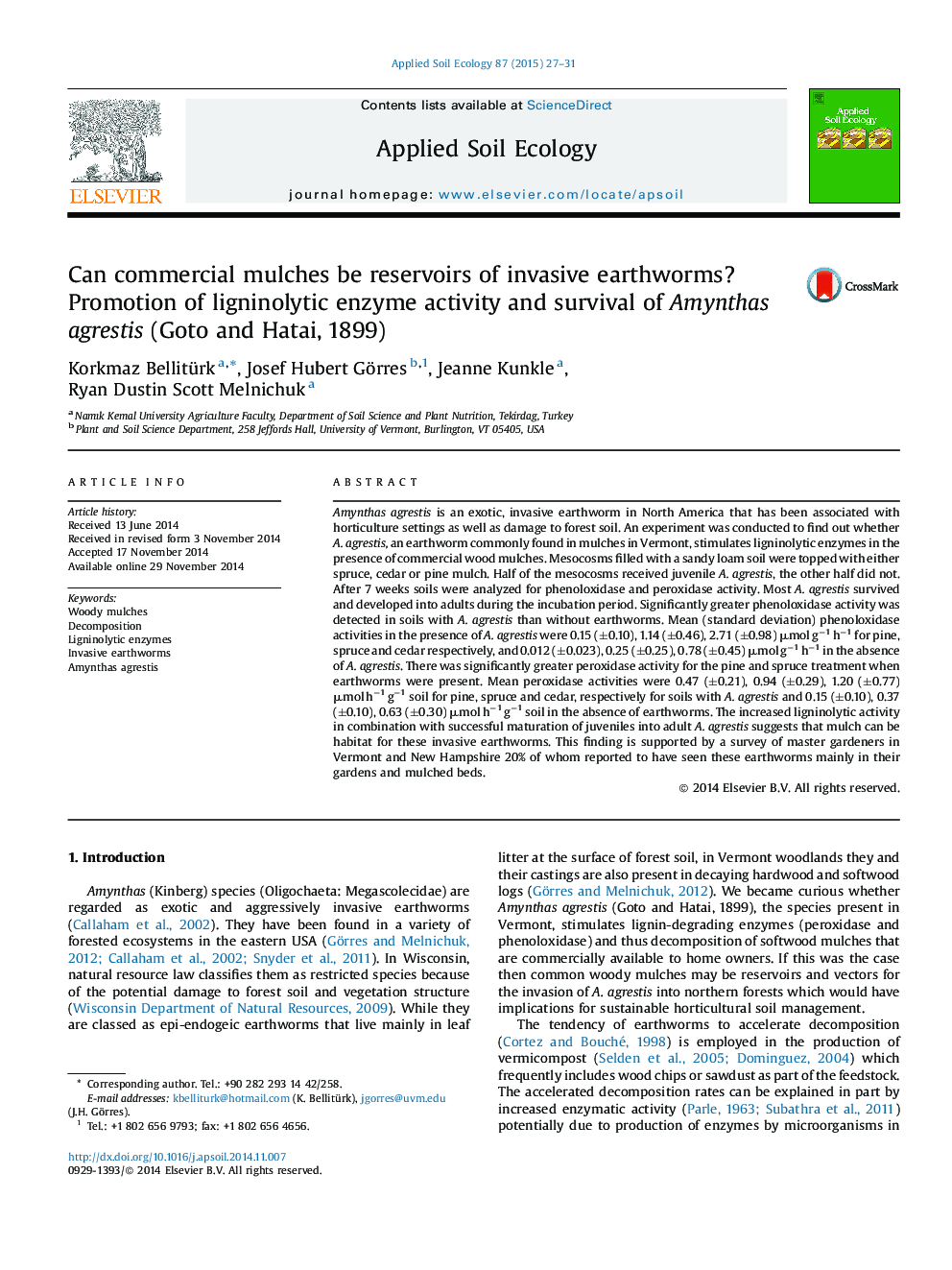| Article ID | Journal | Published Year | Pages | File Type |
|---|---|---|---|---|
| 4382046 | Applied Soil Ecology | 2015 | 5 Pages |
•The invasive Amynthas agrestis is more widely distributed in the Northeastern USA than previously thought.•A. agrestis is frequently found in wood mulches.•In the presence of A. agrestis ligninolytic in shredded softwood mulches enzyme activity is greatly increased.•Mortality of A. agrestis was greatest in pine mulch potentially due to a decrease in pH during mesocosm incubation.•Some mulches may become reservoirs of A. agrestis.
Amynthas agrestis is an exotic, invasive earthworm in North America that has been associated with horticulture settings as well as damage to forest soil. An experiment was conducted to find out whether A. agrestis, an earthworm commonly found in mulches in Vermont, stimulates ligninolytic enzymes in the presence of commercial wood mulches. Mesocosms filled with a sandy loam soil were topped with either spruce, cedar or pine mulch. Half of the mesocosms received juvenile A. agrestis, the other half did not. After 7 weeks soils were analyzed for phenoloxidase and peroxidase activity. Most A. agrestis survived and developed into adults during the incubation period. Significantly greater phenoloxidase activity was detected in soils with A. agrestis than without earthworms. Mean (standard deviation) phenoloxidase activities in the presence of A. agrestis were 0.15 (±0.10), 1.14 (±0.46), 2.71 (±0.98) μmol g−1 h−1 for pine, spruce and cedar respectively, and 0.012 (±0.023), 0.25 (±0.25), 0.78 (±0.45) μmol g−1 h−1 in the absence of A. agrestis. There was significantly greater peroxidase activity for the pine and spruce treatment when earthworms were present. Mean peroxidase activities were 0.47 (±0.21), 0.94 (±0.29), 1.20 (±0.77) μmol h−1 g−1 soil for pine, spruce and cedar, respectively for soils with A. agrestis and 0.15 (±0.10), 0.37 (±0.10), 0.63 (±0.30) μmol h−1 g−1 soil in the absence of earthworms. The increased ligninolytic activity in combination with successful maturation of juveniles into adult A. agrestis suggests that mulch can be habitat for these invasive earthworms. This finding is supported by a survey of master gardeners in Vermont and New Hampshire 20% of whom reported to have seen these earthworms mainly in their gardens and mulched beds.
